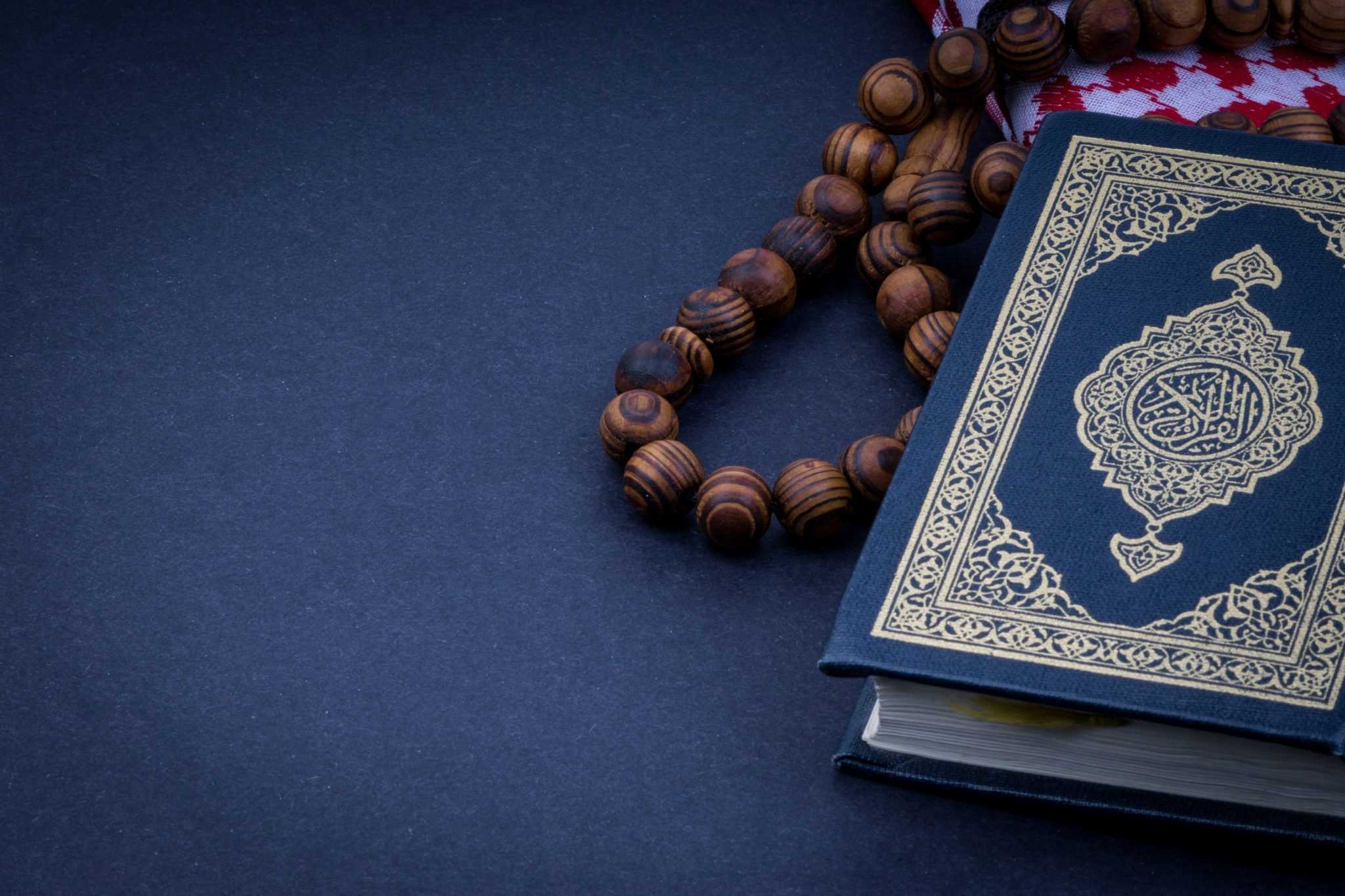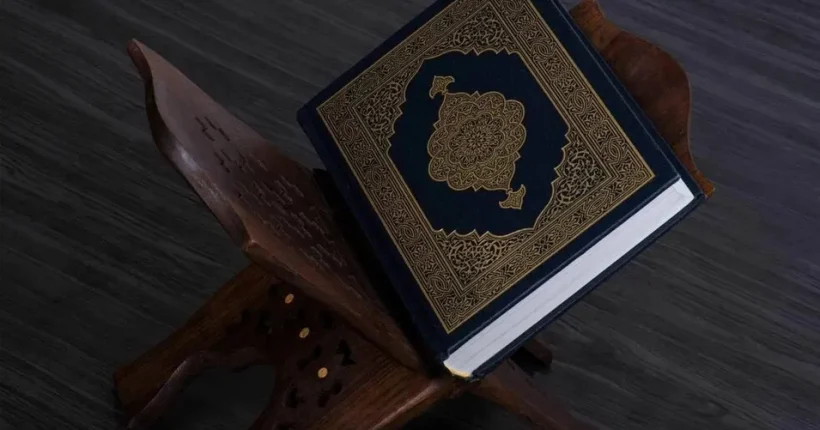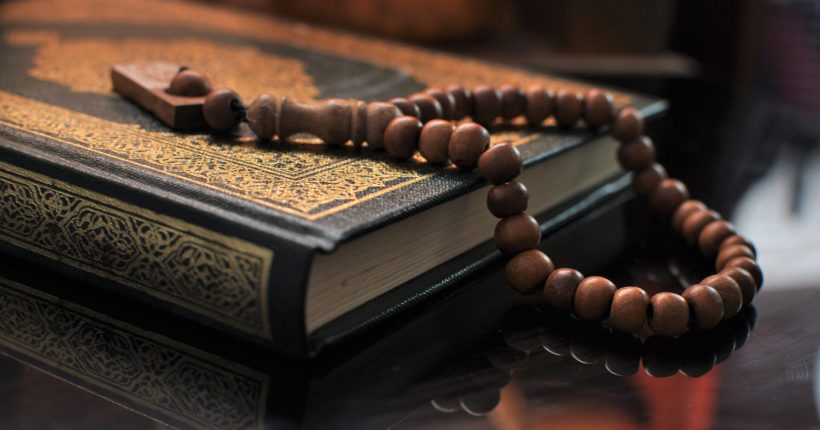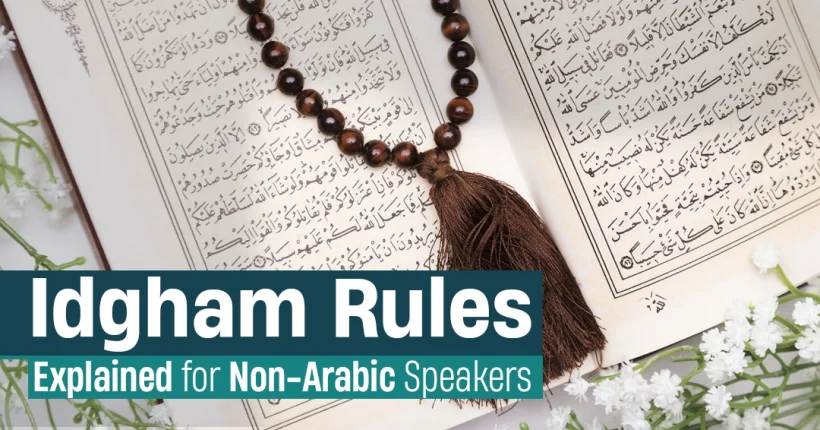If you’ve ever listened to a skilled Qari recite the Quran and wondered why every letter sounds so powerful and alive, the secret might just be in the letters of Qalqalah. These five unique Arabic letters carry a gentle echo that gives the Quran its distinct, captivating rhythm.
For beginners learning Tajweed, understanding the qalqalah letters is like unlocking a hidden melody in every verse. Without them, your recitation might sound flat, but once you master them, every word will bounce with clarity and grace, just as the Prophet Muhammad ﷺ recited it.
Think of qalqalah as the heartbeat of pronunciation: subtle, rhythmic, and essential. Whether you’re just starting your Tajweed journey or you’ve been reciting for years but still feel unsure about your pronunciation, this guide will walk you step-by-step through everything you need to know.
In this article, you’ll discover what qalqalah really means, the five qalqalah letters, when to use them, how to pronounce them correctly, and how to practice them until they become second nature. And yes, we’ll also sneak in some friendly advice to make your learning enjoyable!
Ready to give your recitation that professional touch and make your voice echo with precision and beauty? Let’s dive right in.
What Is Qalqalah in Tajweed?
Qalqalah, the gentle “echo” or “bounce” that makes certain letters pop instead of fade away. In Tajweed, Qalqalah means “vibration” or “echoing sound.” It occurs when one of the five special letters of Qalqalah is pronounced with a slight rebound from the tongue or throat, creating a crisp, resonant sound.
Imagine this: you’re reading the Quran aloud, your recitation flowing beautifully. then suddenly you hit a word ending with ق, and it feels like it bounces in your mouth.
These letters of qalqalah ensure that the Quran’s recitation remains clear, powerful, and true to the sound the Prophet ﷺ taught. Without mastering them, a recitation can feel flat or even lose meaning in some cases.
Importance of Qalqalah in Quran Recitation
The Quran isn’t just meant to be read, it’s meant to be heard. The rules of Tajweed, including the letters of qalqalah, were designed to protect the divine sound of the revelation.
When you pronounce Qalqalah correctly:
You give each letter its due haqq (right).
Your recitation becomes more melodious.
You avoid changing meanings unintentionally.
Let’s say you recite “Qul huwa Allahu Ahad.” That “Q” in Qul (ق) needs a little echo to distinguish it from other Arabic letters. Without that bounce, it may sound dull or incomplete.
The 5 Qalqalah Letters and How to Pronounce Them Perfectly
Ready? Here come the stars of the show — the five letters of Qalqalah you must know for perfect recitation.
ق – ط – ب – ج – د
To remember them easily, scholars created the mnemonic word “قُطْبُ جَدّ” (Qutbu Jad).
Let’s break them down one by one:
1. ق (Qaaf)
A strong, deep letter from the back of the tongue. When you stop on it, give it a firm echo: “…قْ”.
Example: الْحَقُّ (al-ḥaqq), Feel that bounce? That’s your Qalqalah magic.
2. ط (Taa’)
Comes from the front part of the tongue with emphasis.
Example: وَالطَّارِقِ (waṭ-ṭāriq), Don’t overdo it; just a clean bounce.
3. ب (Baa’)
A labial letter produced by bringing the lips together.
Example: تَبَّتْ (tabbat), you’ll feel a soft pop as your lips release the sound.
4. ج (Jeem)
Middle of the tongue touching the roof of the mouth.
Example: وَلَمْ يَلِدْ (walam yalid), if you stop on جْ, ensure it doesn’t fade.
5. د (Daal)
Produced from the tip of the tongue near the teeth.
Example: أَحَدْ (aḥad), hold a clear echo if you stop there.
Each of these letters of qalqalah shares one common trait: a tendency to bounce when pronounced in a sukoon (ْ) state or at the end of a verse.
The Three Levels of Qalqalah Sound
Not all echoes are created equal! Scholars divide Qalqalah into three levels of intensity depending on where and how the letter appears.
1. Minor Qalqalah (Qalqalah Sughra)
Occurs when a letter of qalqalah has sukoon within a word, not at the end.
Example: يَقْتُلُونَ (yaqtulūn), soft, subtle echo.
2. Medium Qalqalah (Qalqalah Wusta)
Appears when you stop at the end of a word that ends with a qalqalah letter and it is sukooned due to stopping.
Example: الْفَلَقْ (al-falaq), a more noticeable bounce.
3. Strong Qalqalah (Qalqalah Kubra)
When the qalqalah letter has a shaddah (ّ) and you stop on it.
Example: الْحَقّ (al-ḥaqq), strong, deep, resonant sound.
Pro tip: Think of Qalqalah like knocking gently on a door, the harder the “stop,” the louder the “echo.”
Common Mistakes Beginners Make with the Letters of Qalqalah
Even with the best intentions, beginners often stumble when practicing qalqalah letters. Here are a few traps to avoid:
Adding a vowel: Qalqalah should bounce, not vowelize. Avoid turning “قْ” into “qa.”
Overemphasizing the sound: Too much echo sounds artificial. Keep it clean and short.
Neglecting tongue placement: Each letter has its makhraj (origin). Learn where each starts.
Ignoring sukoon: Qalqalah only happens when the letter is sakin (ْ).
Learning under a qualified Tajweed teacher helps you catch these subtle errors before they become habits.
How to Practice Qalqalah Like a Pro Even as a Beginner!
Here’s the fun part, practice!
Start with single letters
Practice قْ طْ بْ جْ دْ repeatedly, focusing on clarity.
Move to short words
Try words like أَحَدْ, تَبَّتْ, الْحَقّ, and الْفَلَقْ.
Use recording tools
Record your recitation and compare it to a Qari’s recitation. Our listen to Quran feature is excellent for this.
Learn interactively
Enroll in the best Tajweed course by Tareequl Jannah’s, where a qualified teacher corrects your pronunciation in real time.
Remember: your ears are your best teacher, listen, repeat, refine.
The Secret Beauty Behind Qalqalah in the Quran
Beyond being a pronunciation rule, Qalqalah adds a rhythmic beauty to the Quran. It gives verses a musical harmony, like soft ripples after a pebble hits water.
This subtle resonance:
Enhances listener focus.
Reflects the miraculous sound design of the Quran.
Shows how even a single letter contributes to the overall melody of recitation.
Isn’t it amazing how Allah’s words are perfectly balanced even in sound?
FAQs About Qalqalah
What are the letters of Qalqalah?
The five letters of qalqalah are ق, ط, ب, ج, and د, forming the phrase “Qutbu Jad.”
When do we apply Qalqalah?
You apply it when the letters ق, ط, ب, ج, and د, carry a sukoon (ْ), either originally or due to stopping at the end of a verse.
Does Qalqalah occur in the middle of a word?
Yes! If a letter of qalqalah is sakin in the middle of a word, it’s a minor qalqalah (soft echo).
What’s the easiest way to remember the letters?
Just memorize Qutbu Jad (قطب جد) and recite it daily.
How can I know if my Qalqalah is correct?
You’ll know when you can hear the echo clearly but not exaggeratedly. Better yet, get feedback from a qualified teacher in a Tajweed course at Tareequl Jannah.
Enroll in Tareequl Jannah’s Tajweed Course and Master Qalqalah
If this article sparked your curiosity, imagine how beautifully you could recite the Quran after mastering Tajweed properly!
At Tareequl Jannah, our Tajweed Course is designed for beginners who want to perfect their recitation step-by-step, guided by certified Quran teachers. You’ll:
Learn all Tajweed rules, including letters of qalqalah, idgham, and ikhfa.
Get 1-on-1 interactive sessions online.
Receive personalized feedback and weekly recitation goals.
Start your journey today, enroll now at Tareequl Jannah’s Tajweed Course and make your recitation echo with beauty and confidence.





